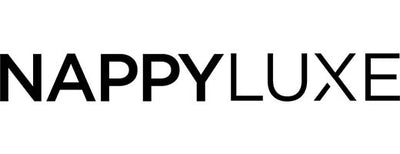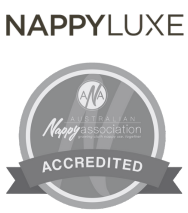How To Use Cloth Nappy Liners Correctly

Your questions answered about cloth nappy liners, what they are, what types you can get, and how to use them correctly.
First and foremost, let's distinguish between a nappy liner and a nappy insert, as these 2 are so often confused or referred to interchangeably.
A nappy insert is the absorbent part of a modern cloth nappy.
It is an essential component, working together with a water-resistant cover to ensure that wee and poo doesn't leak out the nappy.
A cloth nappy liner on the other hand, is an optional extra.
It is usually paper thin and doesn't actually absorb anything.
What are nappy liners used for?
So what do the cloth nappy liners actually do?
They can be used to serve 2 purposes: to make the clean up easier when your baby has done a poo, and to provide a stay dry layer against your baby's bottom.
A stay dry layer allows liquid to pass through to the absorbent inserts, but the layer itself remains feeling dry in order to keep your baby comfortable.
Some babies do not like the feeling of wetness against their skin and this can make them irritable and unsettled, as well as contributing to nappy rash.
How to correctly dispose of the nappy liners?
There are a few different types of nappy liners, some are single use and some are reusable.
All single use nappy liners should be disposed of in the rubbish bin and never flushed down the toilet.
Reusable ones can be washed and used time and time again.
What are liners made of?
Single use liners are usually made from bamboo, and reusable ones are usually made from microfleece.
Are nappy liners flushable?
Some single-use nappy liners are marketed as "flushable", however this is incorrect and they should not be flushed down the toilet.
Just like single use baby wipes, they don't disintegrate in water and therefore flushing them can block sewer pipes in your home or in the community.
What are the best type of nappy liners?
This is a personal choice.
Some cloth nappy users find that reusable nappy liners are an unnecessary addition because they need to be cleaned in the same way as the nappies themselves.
The argument in this instance is that you may as well not use a liner at all.
They also add unnecessarily to your wash load, and add a little extra bulk to the nappy making it that little bit harder to fit your baby's clothing over the top.
Single use nappy liners are paper thin and don't require washing.
However they also have their drawbacks, mainly that that they need to go in the bin and are therefore still contributing to landfill.
Our suggestion is that the best type of nappy liner is no liner at all, or go for a single use one.
After all, the size of a liner is still minute compared to the size of a disposable nappy, so it isn't contributing much to landfill.
Are nappy liners absorbent?
Nappy liners aren't designed to absorb anything.
Single use nappy liners aren't really absorbent at all, although they may hold a few drops of liquid.
Reusable nappy liners will hold a little more, but neither type of liner is designed to actually absorb any liquid.
They are designed to sit in-between the absorbent inserts and your baby's bottom.
Can I use reusable nappy liners instead?
Yes, you can absolutely use reusable liners instead of disposable liners if you don't feel comfortable putting disposable liners in the bin.
But remember, you don't have to use a liner at all with NappyLuxe nappies
This is because the cloth nappy inserts already have a microfleece layer topping every insert to sit against baby's skin.
The benefit of this microfleece layer is:
It wicks moisture away from baby's bottom so that he doesn't have that wet feeling on his skin after doing a wee
It's easy to clean - because the fabric isn't especially pourous, soiling comes away easily and stains don't tend to set in.
How do I use a nappy liner?
If you're using a disposable nappy liner, you simply tear off 1 sheet from the roll and lay it on top of the nappy so that it sits against your baby's skin.
Next, tuck the sides and ends of the liner under and around the nappy insert.
Fit the nappy onto your baby.
If any part of the liner is sticking out, tuck it into the nappy, otherwise you may find moisture wicks onto your baby's clothing.
When disposing of the liner after use, simply knock any baby poo into the toilet before placing the liner in the rubbish bin.
Wash your nappies as usual (see our detailed guide on how to wash & clean modern cloth nappies correctly).
Ready to shop liners?
NappyLuxe disposable bamboo liners come in a pack of 100 sheets which works out as 12 cents per sheet excluding shipping.
Meet the Author
Natalie Lassen

Natalie, Founder of NappyLuxe, is an eco-conscious mother and entrepreneur who discovered the benefits of cloth nappies for her family and the environment. With a mission to create the ultimate cloth nappy, she spent years researching and testing various designs before launching NappyLuxe - a range of high-quality, easy-to-use, and ultra-absorbent cloth nappies. Natalie is passionate about sharing her experience and expertise, helping parents make informed decisions and embark on their own sustainable parenting journey.
Blog posts
How To Use Wool Nappy Covers At Night (Benefits & Wash guide)
Best Cloth Nappies Australia [What Features Do Top Brands Have In Common]
The 5 Top Uses For Cloth Wipes Revealed
Get 10% off your first order
Plus get notified about promotions, new releases and journal updates.





















